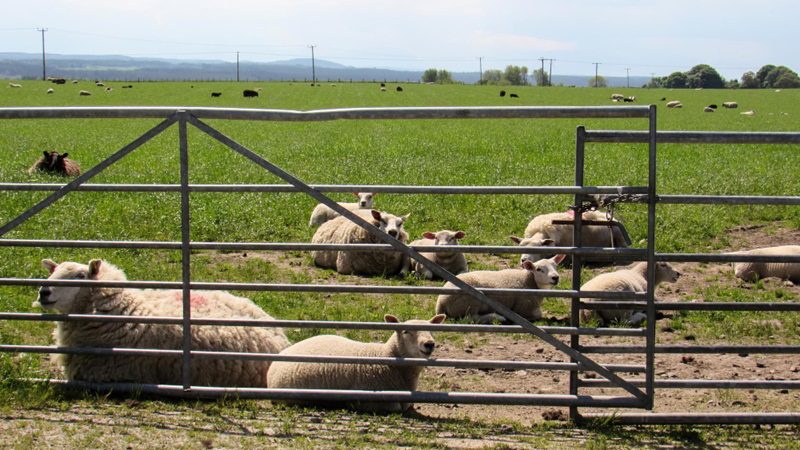7 Typical Errors in Livestock Fencing You Should Avoid

Ensuring the safety and security of your cattle is paramount, making adequate fencing an essential component of farm management. A well-constructed fence not only keeps your livestock within bounds but also protects them from external threats. However, constructing an effective barrier is not as straightforward as it might seem. Many farmers fall prey to common mistakes that can compromise the integrity and functionality of their fences. In this compelling overview, we’ll explore seven typical errors you should avoid when setting up cattle fencing, emphasizing the crucial role of livestock fence panels.
Corner Post Considerations for Livestock Fence Panels
The primary mistake in fencing, whether it’s barbed, high-tensile, or woven wire, involves the use of posts that are too small in diameter and not anchored deeply enough in loose or sandy soils. For effective fencing, especially when incorporating livestock fence panels, the depth of corner posts in the ground should at least match the height of the fence’s tallest wire. For a basic high-tensile wire fence, a post diameter of 4 to 5 inches suffices. However, more substantial fences, such as those with 5 to 6 strands of wire, necessitate posts with a diameter of 6 to 7 inches. For the sturdiest support, particularly with net wire fences or when using livestock fence panels, an 8-inch diameter post is recommended.
To ensure these critical corner posts remain securely in place, a 10-foot brace system is advisable. A particularly effective method is the floating diagonal brace, which involves a 4-inch by 10-foot post notched slightly into the main corner post and resting the other end on the ground opposite. This strategy provides substantial stability to the fencing structure. It’s also crucial to avoid materials like drill stems for bracing in electric fences. Such materials can conduct electricity, potentially reducing the fence’s effectiveness.
Optimal Post-Spacing Enhances Livestock Fence Panels
Many fencers overuse posts, a habit likely inherited from traditional barbed wire fencing techniques that advocate for a post every 16.5 feet.
To rectify this in electric fencing setups, spacing between fence posts is recommended to be between 80-100 feet, equating to roughly 50 posts per mile. For optimal support, particularly when using livestock fence panels, the introduction of a “stay” — a shorter post that rests above ground to support the wires — is advised for posts set 100 feet apart. On the other hand, a tighter spacing of 50-70 feet is favored for enhanced stability and effectiveness of the fence structure.
Selecting the Appropriate Energizer
Experts advise using an energizer with a capacity of 1 joule per mile of fencing to ensure adequate power distribution, regardless of the wire count. This means a fence spanning six miles should be powered by at least a 6-joule energizer for optimal performance.
To enhance this setup, particularly when integrating livestock fence panels, experts suggest opting for a low-impedance energizer equipped with a low-amp fuse to mitigate voltage drops. A higher capacity energizer, while capable of extending through more vegetation, may decrease in voltage, making 7,000-8,000 volts the ideal range for maintaining a strong and effective barrier.
Ground Rod Spacing for Effective Conduction
Effective grounding is crucial for electric fences, with experts suggesting that successful grounding accounts for nearly all of an electric fence’s functionality. The guideline is to allocate 3 feet of ground rod for each joule of output from the energizer. For instance, a fence powered by a 6-joule energizer requires a total of 18 feet in ground rods, usually achieved by using three 6-foot rods, each placed a minimum of 10 feet apart to maximize soil interaction and ensure a robust electrical circuit.
Proper spacing between ground rods is essential because each rod acts like an antenna, capturing electrons from the soil and directing them back to the energizer to complete the electrical loop. When ground rods are too close, their efficiency diminishes, as they collectively behave as a single rod due to overlapping soil volumes.
For optimal grounding, especially in areas with inadequate rainfall for soil conductivity, distributing ground rods evenly across the fence’s entirety enhances grounding effectiveness. Using galvanized rods is recommended for their durability and resistance to corrosion, making them a cost-effective and long-lasting solution for electric fences, including those with livestock fence panels. Ensuring all components, such as wires and connections, are galvanized minimizes maintenance and enhances the system’s integrity. The ideal condition for a ground system is within soil that remains moist and rich in minerals, offering the best conductivity for the electric fence system.
Wildlife-Friendly Fencing with Livestock Fence Panels
Addressing wildlife interactions with fences, the solution lies not in creating barriers impervious to elk and moose but in adopting a more adaptable fencing approach. The experience of transitioning from traditional T-posts, which often succumbed to damage from wildlife in Idaho, to more resilient steel posts, has significantly reduced such issues. This change underscores the effectiveness of flexible fencing structures.
Additionally, the design of a lower-profile fence is key for accommodating wildlife movements. Implementing a two-wire fence setup, with the top wire positioned at 30 inches and the lower wire at 20 inches, strikes a balance. This configuration allows smaller animals like antelope to effortlessly pass underneath while ensuring larger species like elk contact the fence in a less harmful manner, primarily with their legs. Such strategic design considerations ensure the durability of the fence, including those enhanced with livestock fence panels, while promoting harmony with the surrounding wildlife.
Innovative Gate Solutions in Electric Fencing
Incorporating a functional gate into an electric fencing system presents a unique set of challenges, especially in maintaining a continuous electric current throughout the fence, including sections with livestock fence panels.
A practical solution involves the installation of floating diagonal braces at each side of the gate to provide structural support. To ensure the section of the fence where the gate is located remains electrified, it’s recommended to bury insulated wires – one carrying the live current and the other serving as a ground – at a depth of one foot beneath the gate’s threshold. Adjusting the depth based on the usage frequency of the gate and the terrain’s moisture levels ensures optimal performance. This method effectively bypasses the need for the gate itself to conduct electricity, with the current instead passing safely underground, maintaining the integrity and functionality of the electric fence.
The Advantage of Non-Conductive Posts
Incorporating steel posts into an electric fence poses a significant risk of short circuits, heavily depending on insulators for preventing electrical shorts. This reliance greatly increases the chances of a malfunction, especially in fences designed to contain cattle.
A more reliable solution is the use of posts made from highly flexible materials, such as plastic or wood-plastic composites. These materials offer enhanced durability and reduce the risk of insulator failure, which can lead to shorts in the fence. Such alternatives ensure a more stable and secure fencing system, crucial for setups involving livestock fence panels, by minimizing the potential for electrical failures.
Key Strategies for Building a Dependable Electric Fence
- Ensure corner posts are properly sized and placed for maximum stability.
- Maintain a distance of 50-100 feet between fence posts for optimal efficiency.
- Select an energizer with a power output of 1 joule per mile to ensure effective coverage.
- Install ground rods with adequate spacing to enhance the fence’s grounding system.
- Design your fence to accommodate wildlife, making it both secure and animal-friendly.
- Implement an underground wiring system at gate openings to maintain a continuous current without direct conductivity.
- Opt for flexible plastic or composite posts over steel to reduce the risk of electrical shorts and ensure the longevity of the fence.
Your Guide to Flawless Fencing with Bison Pipe
In crafting a dependable fence that includes our livestock fence panels, we at Bison Pipe believe in the importance of awareness and proactive error avoidance. This approach ensures your steel fencing is not only more secure and efficient but also cost-effective. By focusing on these crucial details, we help farmers and ranchers like you keep your livestock safely contained, protect your property, and guarantee that your fencing solutions endure over time. With Bison Pipe’s expertise and quality livestock fence panels, achieving a robust and reliable steel fence is within easy reach.

